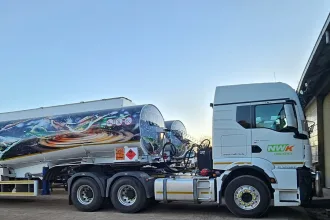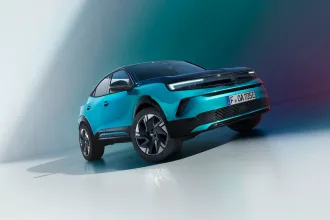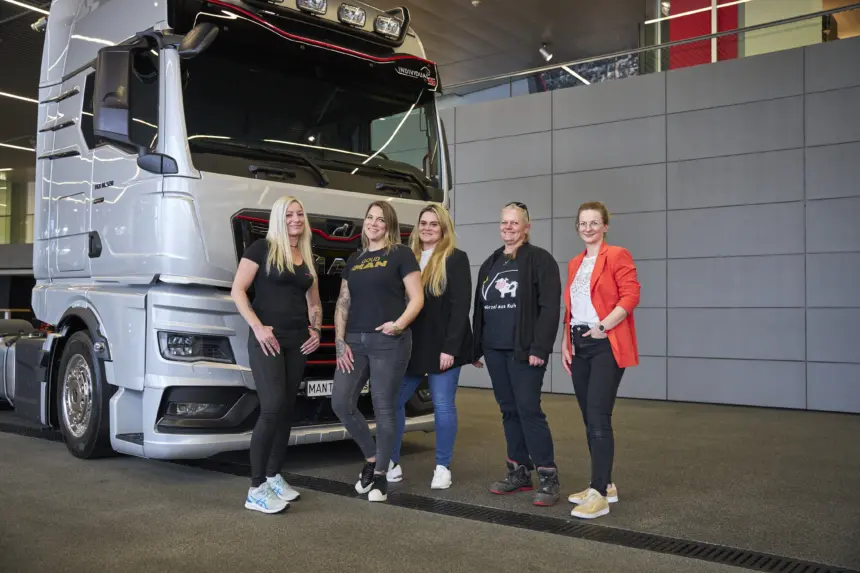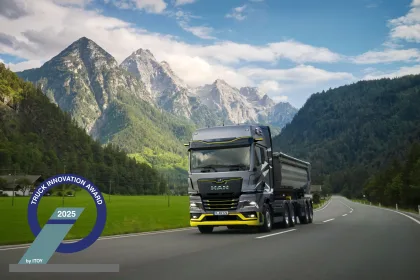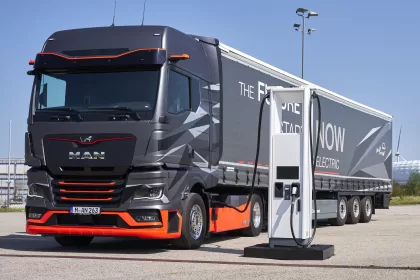- As part of its “WoMAN” workshop series, MAN is researching the specific needs of female drivers
- The study aims to counteract the gender data gap in product development
- Proportion of women in possession of a truck driver card increases
Since 2022, MAN Truck & Bus has been running the “WoMAN” workshop series in truck product development, which aims to contribute ideas on how the commercial vehicle manufacturer can focus more on the specific needs of female drivers in the future. This is because the perspective in the industry has so far been very one-sided, with predominantly male needs and lifestyles being taken into account in truck development.
The initiative aims to counteract this so-called “gender data gap”. “Female drivers contribute another important perspective to our product development. We want to use these valuable insights to make our products even better, more comfortable and more user-friendly for our customers in the future,” says Dr Frederik Zohm, Chief Development Officer at MAN Truck & Bus.
“WoMAN – Initiative ” shows the differences
MAN has always focussed on female and male drivers when it comes to developing new vehicles. The “WoMAN” think tank also endeavours to get to know the everyday working lives of female drivers better and to pay attention to the differences between men and women. The aim is to make the vehicle and the profession of truck driver more attractive to women. A MAN team from the Engineering and Design departments led by psychologist Dr Sigrun Weise and MAN Market Research is therefore specifically inviting female professional truck drivers to workshops, collecting and analysing the relevant data and facts.
On average, female drivers are seven years younger, eleven centimetres shorter and 18 kilograms lighter than their male colleagues. The preferred width of the beds is discussed in the workshops, as is the question of whether there should be washbasins or toilets in the interior or the ideal number of sockets so that electrical appliances such as hairdryers or hair straighteners can also be used in the cabin. An initial general realisation: the majority of female drivers do not want a “women’s truck” that is visible from the outside.
Proportion of women among professional drivers is steadily increasing
Women drivers are a growing group of drivers in Germany. The proportion of women in possession of an truck driver’s licence has recently risen by more than two percent. And the trend is rising, as the figures from the Federal Motor Transport Authority show. In the years 2011 to 2021, the proportion of women training to become professional drivers increased from four to eleven per cent. “With around 30,000 driver cards for women compared to around one million for men, the dimension is still very different. But it is becoming apparent that more and more women are opting for this profession,” explains workshop leader Dr Sigrun Weise. “We are also seeing that the voice of female drivers carries weight on social media.”
The everyday working life of female truck drivers is to be investigated further using detailed questionnaires. This will also help to incorporate female user requirements into vehicle development and initiate improvements. “I don’t know of any other truck manufacturer that is as interested in the needs of female drivers as MAN Truck & Bus,” says professional driver Ines Böttcher and her colleague Christina Scheib adds: “It would be a wow effect for us female drivers if, in a few years’ time, we see that our suggestions have been taken on board in the development of the trucks.”

